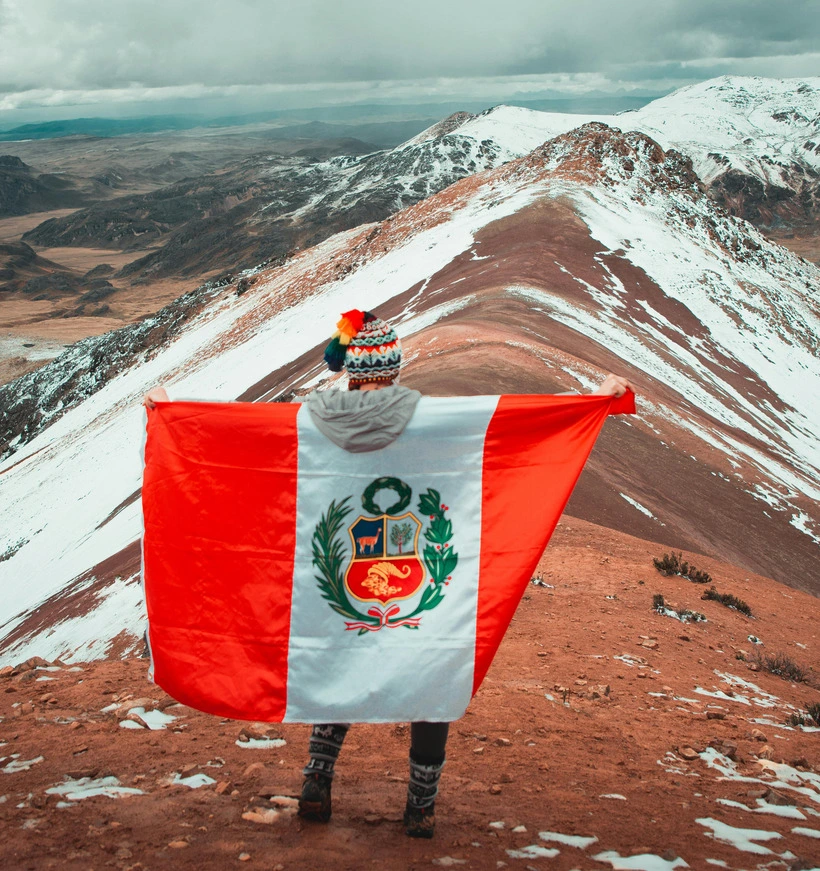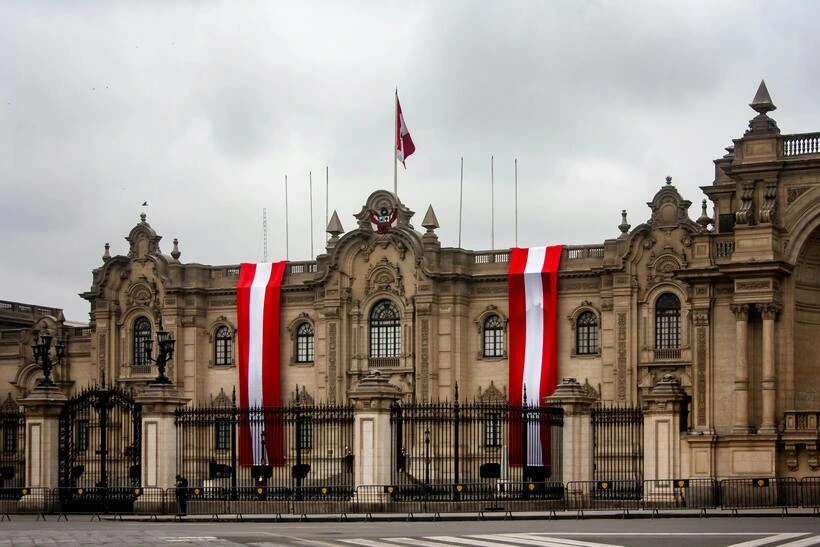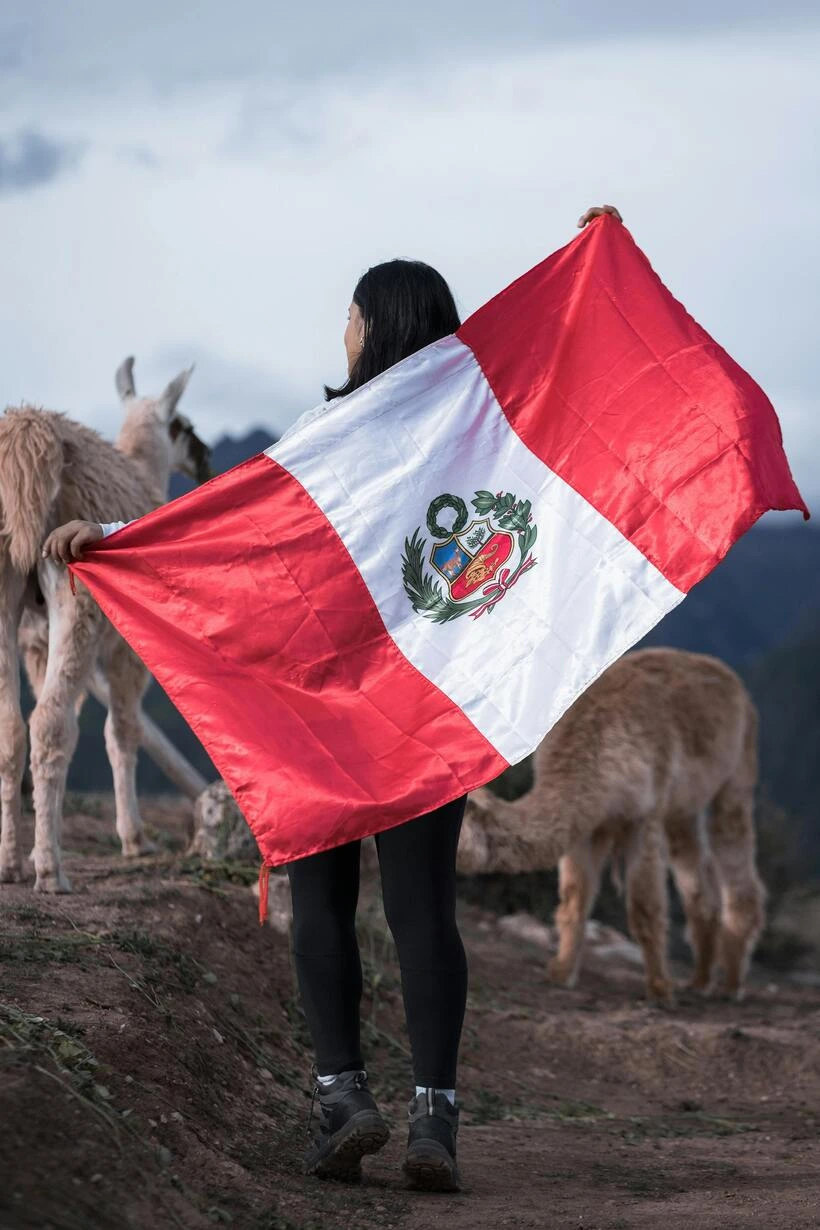The Peruvian flag, also known as the flag of Peru, is an important part of the country's history and culture. With its vibrant colors and meaningful symbolism, it represents Peru's identity and heritage. In this article, we will look at the intriguing aspects of the Peruvian flag, including its design, historical significance, and symbolism behind its elements.
This blog will explain the significance of the Cusco flag, the story behind it, and how these symbols contribute to Peruvian national pride.
Exploring the Rich Heritage of a Country
Colors and Symbolism
Peru's flag features three vertical stripes. The red side stripes represent the Peruvian people's bravery, valor, and sacrifices during their fight for independence. The central stripe is white, symbolizing peace and purity. Some versions of the flag include the national coat of arms in the white stripe, emphasizing the country's natural resources and history.
- Red Stripes: Symbolize the bloodshed for independence and national pride.
- White Stripe: Represents peace, purity, and unity among the Peruvian people.
- National Coat of Arms: Embodies the nation's history, resources, and cultural heritage.
Historical Background
The history of the flag is linked to Peru's rich heritage and struggle for independence. The Peruvian flag, adopted on February 25, 1825, represents the people's unity and aspirations. Its design reflects Peru's aspirations, cultural heritage, and sense of national unity.
Variations of the Peruvian Flag
The Peru flag has three main variations, each serving a distinct purpose:
- War Flag: This version includes the national coat of arms and is used by military institutions.
- State Flag: Also featuring the coat of arms, this flag is displayed at government buildings and official institutions.
- Civil Flag: A simpler version without the coat of arms, used by Peruvian citizens during public celebrations and national events.
Standarization of the Peruvian Flag
The Peruvian flag follows specific regulations to maintain consistency in its proportions and colors, ensuring its proper representation in official and public use.
The Flag's Proportions and Official Dimensions
The official design of the Peruvian flag follows a 2:3 ratio in width and length. Additionally, when the coat of arms is included in the central white stripe, it must occupy one-third of the flag's height. These dimensions are legally established and must be adhered to in official use by institutions and government events.
Color Codes of the Peruvian Flag
The red color of the Peruvian flag has been standardized in various color systems to ensure consistency in print and digital media.
- Pantone: 186 C
- RGB: (206, 17, 38)
- CMYK: (2, 100, 85, 6)
- HEX: #CE1126
The white color does not have a specific code, as pure white is used.
National Flag Etiquette and Protocol
It is critical to follow proper usage and display guidelines for the Peruvian flag. Understanding flag etiquette is essential, especially at national events and ceremonies.
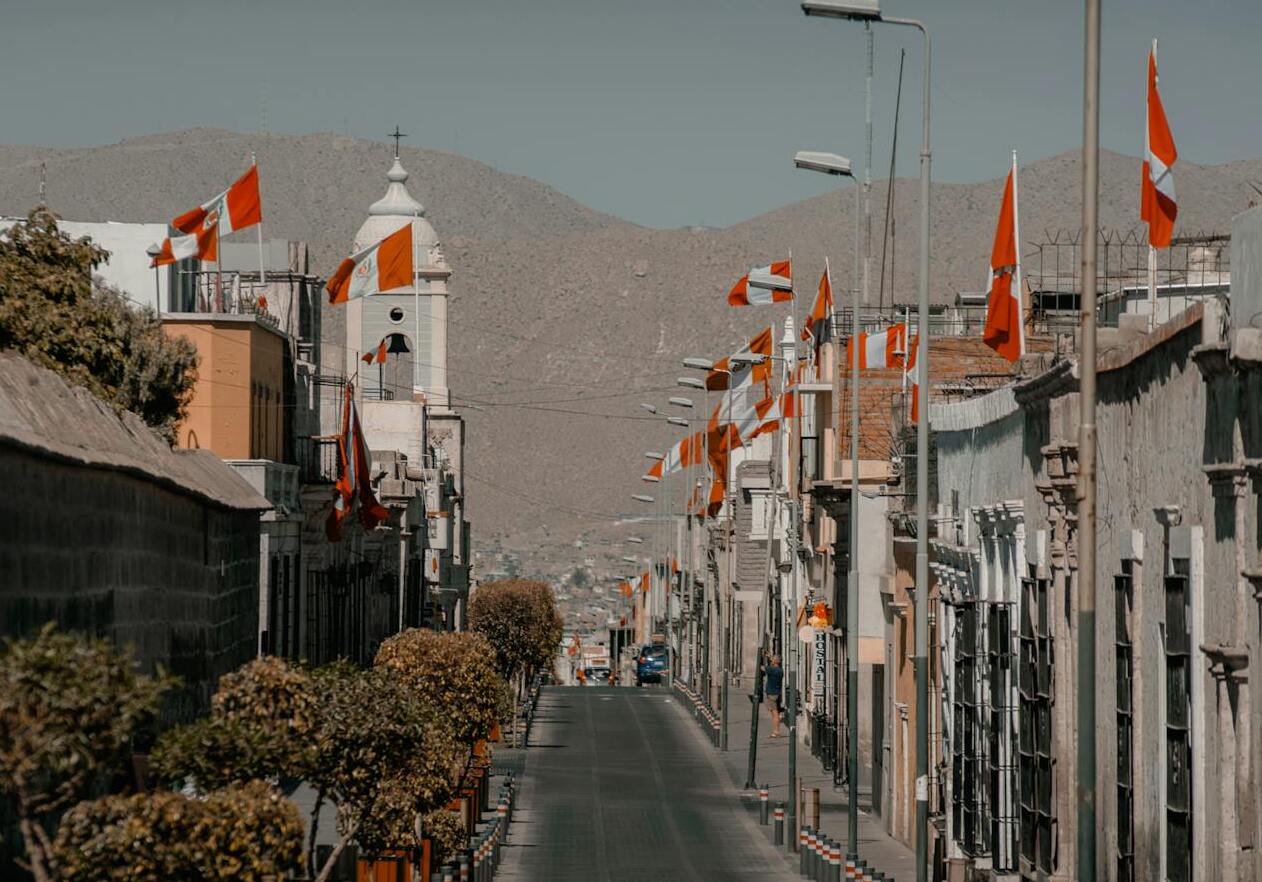
When is Peruvian Flag Day celebrated?
Peru celebrates the National Flag Day every year on June 7th, commemorating the Battle of Arica in 1880. On this day, Peruvians honor the bravery of soldiers who defended the flag of Peru during the War of the Pacific. The celebration includes official ceremonies, military parades, and patriotic events across the country.
Flag Protocol in National Celebrations
The Peru flag plays a crucial role in national ceremonies, and its display follows strict etiquette:
- Mandatory Hoisting: Public buildings must display the flag of Peru during Fiestas Patrias (July 28-29), Peru’s Independence Day celebrations.
- Respectful Ceremony: In schools and official events, citizens stand to sing the national anthem while the Republic of Peru flag is raised.
Proper Handling
- Handling with Care: The Peruvian flag should be handled with care and respect, ensuring it is not allowed to touch the ground or floor.
- Hoisting and Lowering: The flag should be raised briskly and lowered ceremoniously, typically hoisted at sunrise and lowered at sunset.
- Displaying the Flag: It should be displayed with the red bands on the sides and the white field (or coat of arms, when present) in the center.
- Half-Staff: Lowering the flag to half-staff is a gesture of mourning or respect on specific days of remembrance or national tragedies.
- Flag Retirement: When a Peruvian flag becomes damaged, it should be retired in a dignified manner, often involving burning in a respectful ceremony.
- Flag Size and Placement: The size of the flag should be proportionate to the display area, following local guidelines.
Interesting Facts and Trivia About the Peruvian Flag
Take a journey through fascinating facts and lesser-known trivia about the Peruvian flag. Discover unique features in the flag's design that contain hidden symbolism, as well as stories about famous flag-related incidents.
Rich Tapestry of History
- Adoption Date: The current flag was adopted on February 25, 1825.
- Colors and Symbolism: The red symbolizes the blood spilled for independence, while the white represents peace and purity.
- Coat of Arms: Represents the national shield with the vicuña, cinchona tree, and a cornucopia of gold coins.
- National Identity: Embodies Peru’s rich history, cultural heritage, and ongoing pursuit of unity, prosperity, and renewal.
Creation of the Flag
- The story of the creation of the Peruvian flag is enriched by a poetic narrative from Peruvian author Abraham Valdelomar. According to his tale, General José de San Martín was inspired by the sight of parihuanas (Andean flamingos) in the Paracas region, whose vibrant red and white plumage sparked the idea for the flag. The red symbolized the blood shed for independence, and the white stood for peace and hope.
- Though this version is more legend than fact, it highlights how Peru’s natural beauty intertwined with its struggle for freedom, providing a poetic backdrop to the design of the flag. The official flag, adopted in 1825, embodies these values, but Valdelomar’s story continues to captivate Peruvians, adding a romantic layer to the nation’s symbol.
The Flags of Peru’s Departments
Peru is divided into 24 departments and one constitutional province, each with its own flag. These flags represent the unique identity, heritage, and pride of each region. Here is an overview of the flags for each department:
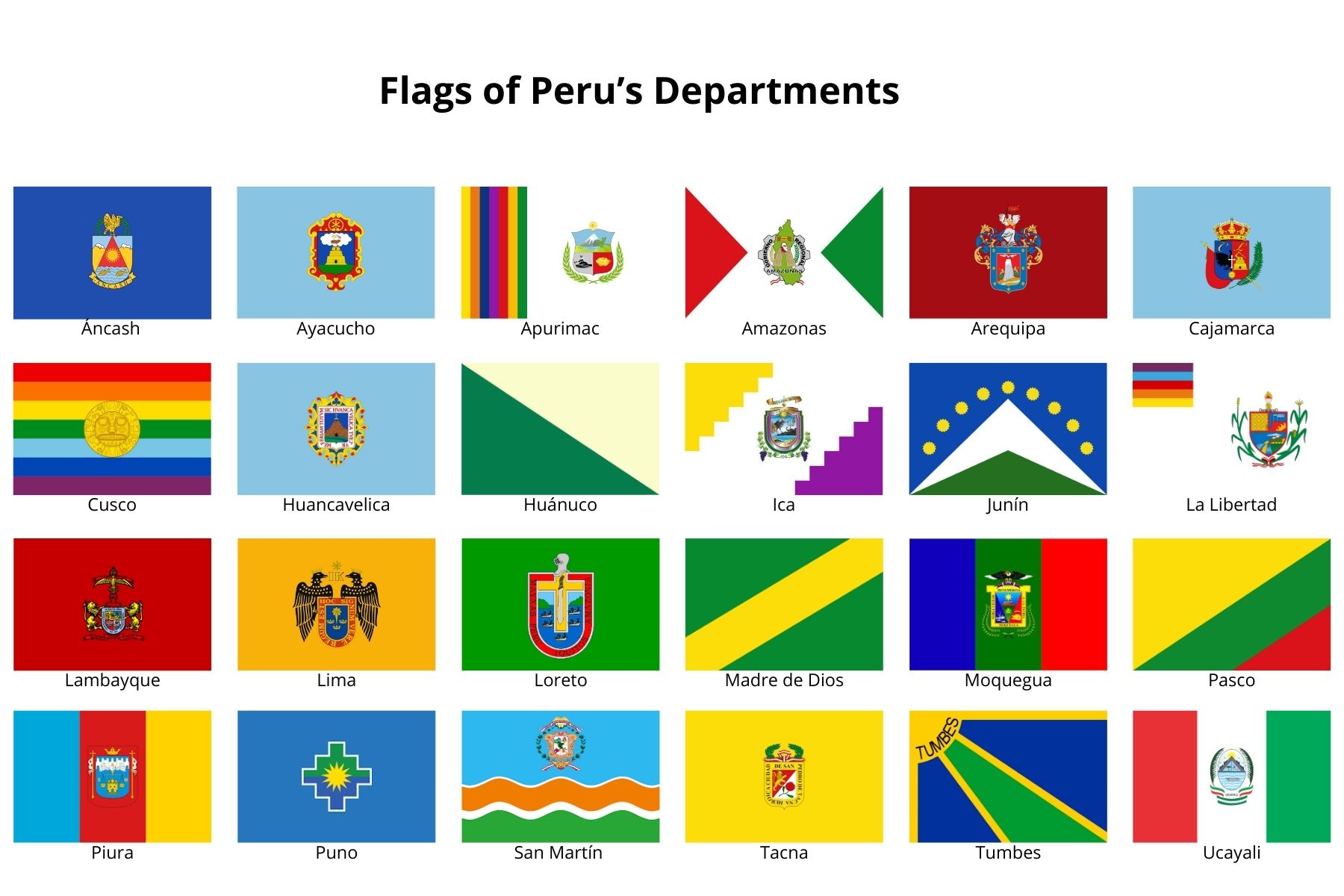
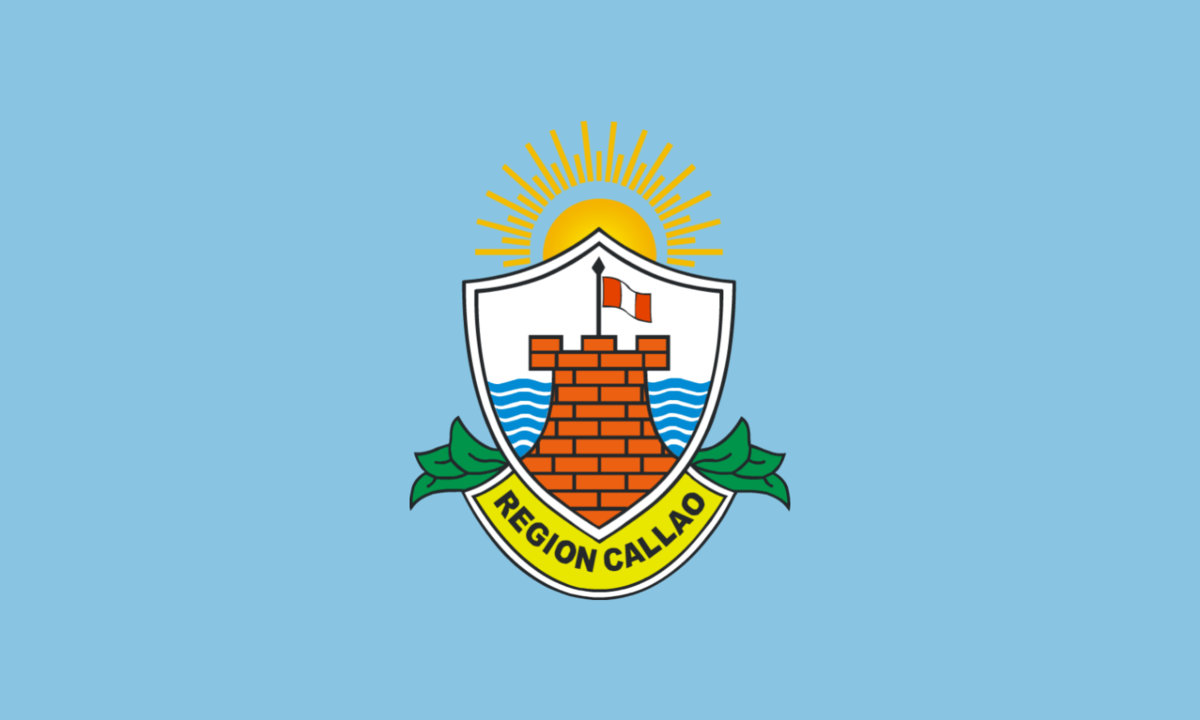
The Cusco Flag - A Tale of Controversy and Identity
Surprised by the Cusco flag? Here, we'll tell you the real story. The Cusco flag has seven horizontal stripes in the colors of the rainbow: red, orange, yellow, green, indigo, blue, and purple. This frequently causes tourists to confuse it with the LGTBIQ+ community flag. The main distinction is the light blue stripe on the Cusco flag, which has seven colors versus six on the LGTBIQ+ flag.
Origin and Historical Context
- Inception: The flag was presented by Raúl Montesinos Espejo during the 25th anniversary of his radio station, Tawantinsuyu, in 1948.
- Design Influence: Inspired by the wiphala, an Aymara banner of seven colors created in Bolivia in 1945.
- Official Declaration: Julio Gilberto Muñiz Caparó, mayor of Cusco, declared the flag official in 1978, without presenting any studies to back up his decision.
Symbolism and Acceptance
- Public Opinion: Despite its controversial origins, the Cusco flag has widespread approval from its citizens.
- Festivities: The whole city is filled with its colors during the month of June, celebrating the main festivals of Cusco.
To learn more about this interesting flag, Click Here!
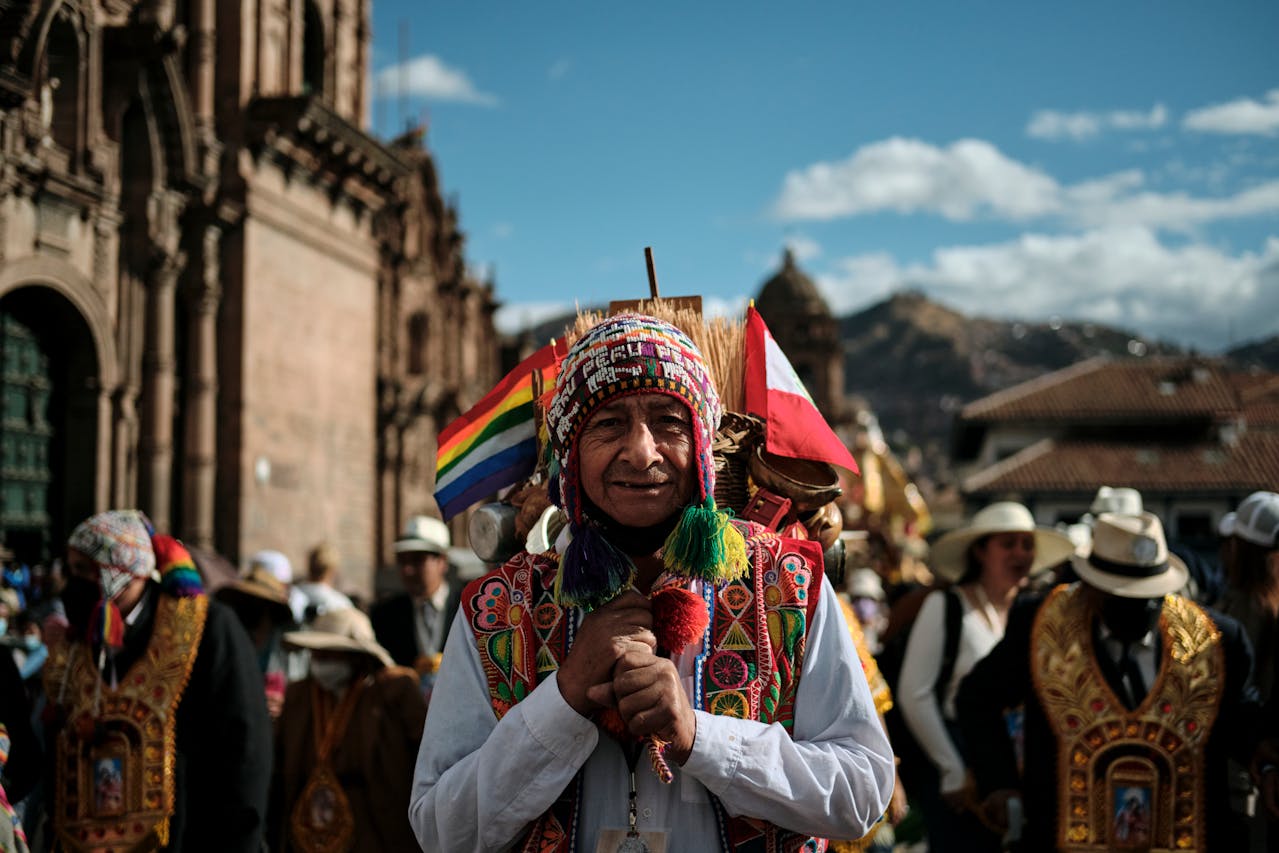
Peru's flag is a powerful symbol of its heritage, values, and aspirations. From its vibrant colors and meaningful design to its rich history and cultural significance, the Peruvian flag unites the country and reminds them of their common heritage. The Cusco flag, with its distinct story, adds another layer to Peru's rich tapestry of national symbols.
Discover the rich heritage and vibrant culture of Peru with Peruvian Sunrise, your trusted Peru travel agency. Explore our Peru holiday packages and experience guided tours of Peru, including family-friendly tours and customized Peru itineraries. Plan your next adventure and book your Peru vacation packages today!
Ready to start your Peruvian adventure? Contact us today to begin planning your customized tour! Complete our Peru travel survey or email us at info@peruviansunrise.com, and let's make your dream trip a reality.
Thank you for reading!
Please, follow us on Facebook and Instagram, click on the following icons: ![]()
![]()
![]()
And If you liked the article, you are very welcome to share it on your social media.

